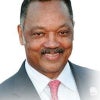
The canary does not soar like an eagle. It doesn't mark the change of seasons like a swallow. But the delicate canary captures the attention of the hardest miners, for it warns of impeding danger. When the canary keels over, miners run, realizing that the atmosphere is becoming a threat to life.
For societies, it is the poor who are the canary, warning of conditions dangerous to the economy and to life. Sadly, we pay less attention to our social canary than miners do theirs. The ads celebrate the lifestyles of the wealthy.
We should listen to the canary in the mine of America for it is now warning us that our economy is dangerously fouled, and our society is suffering lethal conditions. The poor in America are growing in number. More children are being raised in misery. More seniors are forced to choose between food and medicine. As the poor spread, the middle class declines and inequality worsens. The economy doesn't work when 1 percent of the population captures as much income as the bottom 40 percent.
Evidence assembled by the Poverty, Promise and Possibility Initiative at the University of Chicago demonstrates that poverty is becoming ever more threatening. The percentage of Americans living in "extreme poverty" is growing, reaching the highest level ever recorded. In 2010, more than 20 million Americans, one out of every 15, were living in extreme poverty, defined as those with incomes of 50 percent or less of the poverty level. And now, new poverty measures adopted by the Census Bureau indicate the numbers may be worse than previously noted.
In Washington, D.C., the "food insecurity" rate for children -- meaning that they aren't certain of their next meal -- is over 32 percent. In Chicago, demand at the Greater Chicago Food Depository is approaching record levels. In areas of Cook County, 45 percent of children are "running on empty," having missed a main meal during the day.
Yet, even as the poor grow in number, they become ever more isolated. America has outlawed segregation by race -- but economic segregation grows ever more entrenched. The "very poor" are increasingly being pushed into "bad neighborhoods." At least 2.2 million more Americans, a 33 percent jump since 2000, live in neighborhoods where the poverty rate is 40 percent or higher, according to a recent study by the Washington-based Brookings Institution.
If Gandhi was right about poverty being the worst form of violence, then America is becoming a far more violent society.
Republicans argue that the way to deal with this is by cutting taxes on the wealthy, with the money "trickling down" to the many. But you can't deal with a leak in the hull by rearranging the chairs on the luxury deck. Lyndon Johnson understood this. He went directly to the source of the leak. As part of his War on Poverty, he created the food stamp program, child nutrition measures, Job Corps, an Appalachian regional council and more. Johnson's war was winning -- reducing poverty and childhood poverty to its lowest levels. That war was lost not in our cities, but in the jungles of Vietnam.
Today, the poor don't get much attention. But they are the true measure of the health of our society -- and we are getting sicker. As winter comes, we should all reach deep to help the poor, support the food kitchens, and the shelters. But charity is not enough. We need action on jobs. We need to extend unemployment insurance. We need to make certain that children do not go hungry or homeless in this wealthy nation.
We have work to do.
